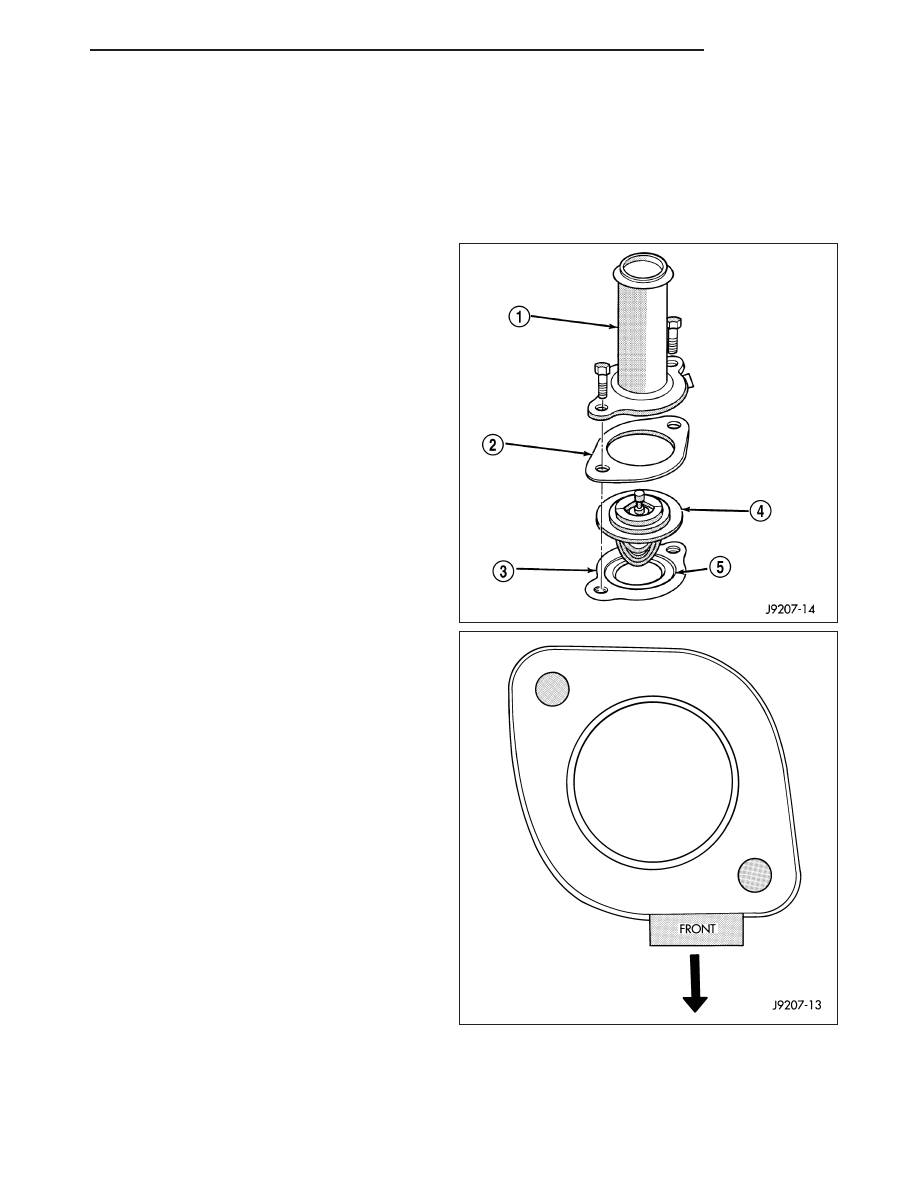Dodge Durango (HB). Manual - part 135

6. Remove thermostat housing mounting bolts , ther-
mostat housing (1) and thermostat (3).
INSTALLATION
5.7L ENGINE
1. Clean the mating areas of the intake manifold and
thermostat housing (1).
2. Install the thermostat (4) (spring side down) into the
recessed machined groove on the intake manifold.
3. Install the gasket on the intake manifold and over
the thermostat.
4. Position the thermostat housing (1) to the intake
manifold. Note: The word FRONT stamped on
housing. For adequate clearance, this must be
placed towards the front of the vehicle. The hous-
ing is slightly angled forward after the installation to
the intake manifold.
5. Install the housing-to-intake manifold bolts. Tighten
the bolts to 23 N·m (200 in. lbs.)
.
6. Install the radiator upper hose to the thermostat
housing.
7. Air Conditioned vehicles; Install the generator.
Tighten the bolts to 41 N·m (30 ft. lbs.).
8. Install the support bracket (generator mounting
bracket-to-intake manifold).. Tighten the bolts to 54
N·m (40 ft. lbs.).
9. Install the accessory drive belt (Refer to 7 - COOL-
ING/ACCESSORY DRIVE/DRIVE BELTS - INSTAL-
LATION).
10. Fill the cooling system (Refer to 7 - COOLING -
STANDARD PROCEDURE).
11. Connect battery negative cable.
12. Start and warm the engine. Check for leaks.
3.7L/4.7L ENGINE
1. Clean mating areas of timing chain cover and ther-
mostat housing.
2. Install thermostat (spring side down) into recessed
machined groove on timing chain cover.
3. Position thermostat housing on timing chain cover.
4. Install two housing-to-timing chain cover bolts.
Tighten bolts to 13 N·m (112 in. lbs.) torque.
HB
ENGINE
7 - 35